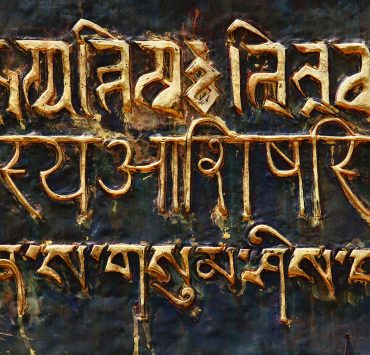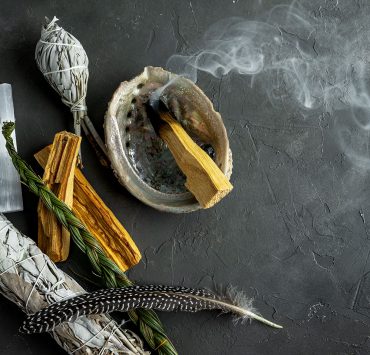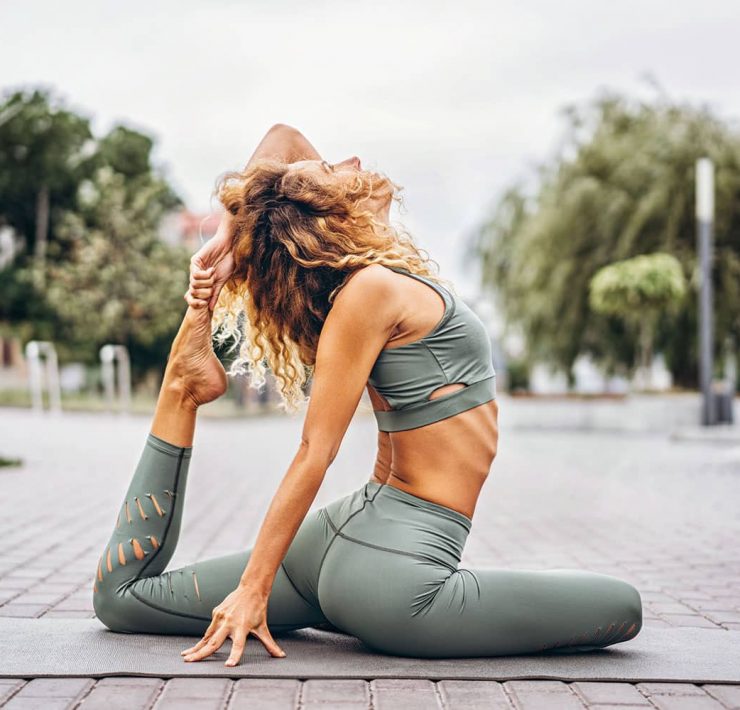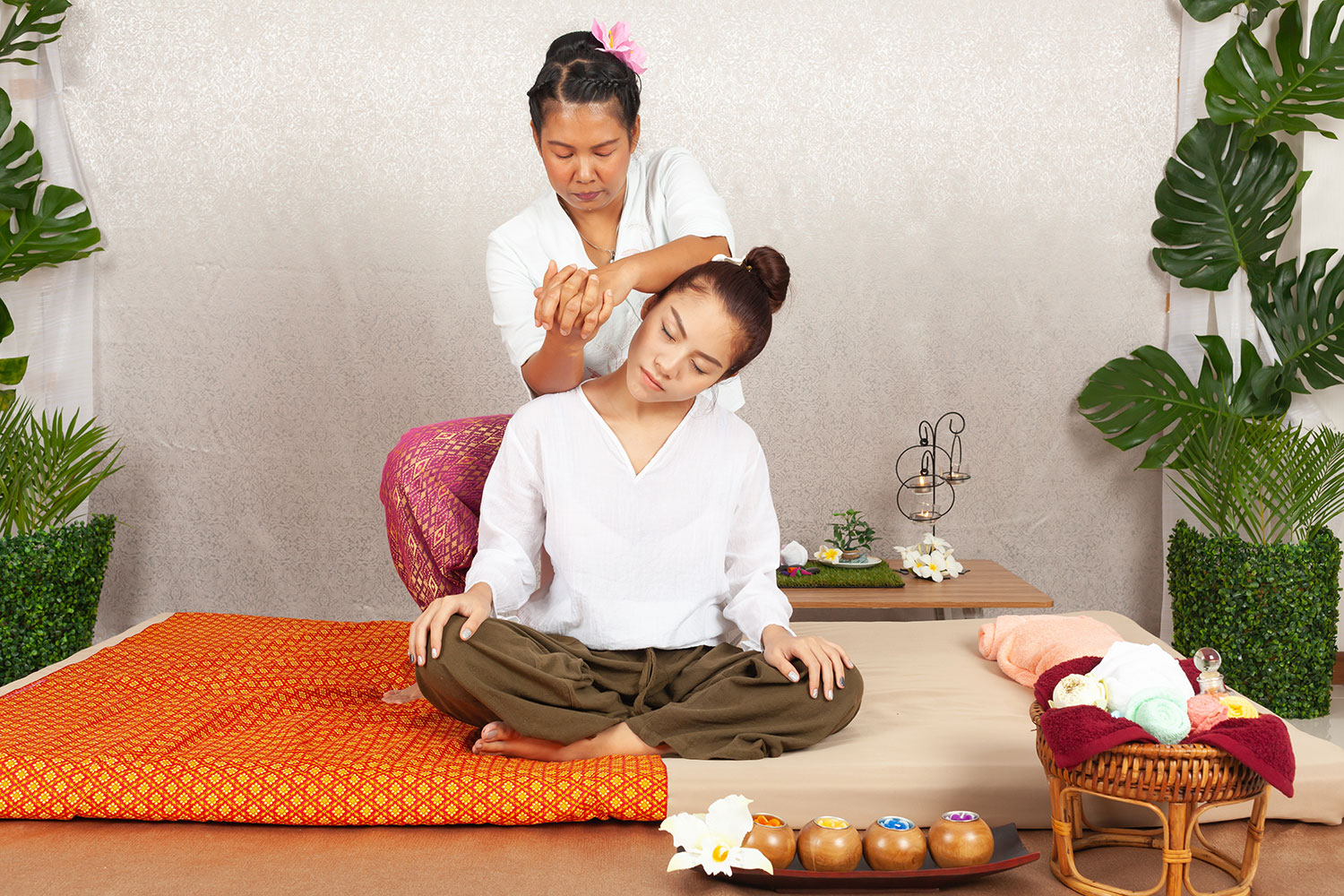
Susan views the world through a lens of spirituality, health,…
Many people get massages as a way to relax at the spa. But in Thailand, traditional Thai Massage is closely linked with Buddhism and healing. Just like Traditional Chinese Medicine or Ayurveda, Thai Massage is part of one of Asia’s oldest healing systems.
From the time of Buddha up to the present day, Thai Massage has been passed down along with other healing practices. Although the lineage was almost destroyed, this living holistic healing system continues today all over the world. It continues to evolve and change with each era and modern times.
Because it is a living tradition, the way Thai Massage is practiced will vary from school to school and even practitioner to practitioner. But they will have some key elements in common which make them uniquely Nuat Thai — the official Thai name for Thai Massage.
Western yoga practitioners are particularly drawn to Nuat Thai and have even dubbed it “Lazy Man’s Yoga.” It is a complementary practice to Indian yoga asana that has similar principles of alignment and focus on the energetic as well as the physical body.
History of Thai Massage
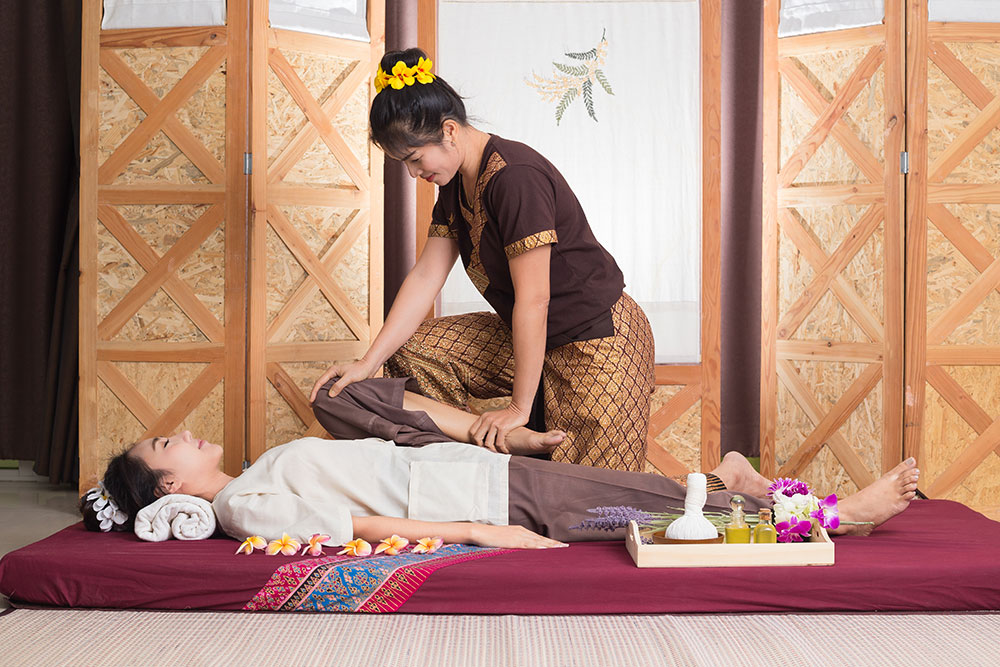
Thai Massage belongs to a family of body and energetic massage and manipulation for healing from Asia. These include Japanese Shiatsu, Philippine Hilot, Chinese Tui Na, and Indian Ayurvedic Massage.
The latter two of the aforementioned Asian healing systems are the ones that influenced Thai massage the most. Many records were kept in the Pali language. They trace the origins of Nuat Thai as far back as 2500 years ago.
It was written that Jivaka Kumar Bhaccha, a friend and physician of the last Buddha, was the founder of the Thai healing system. In Thai, he is known as Chiwaka Komaraphat. It is believed that this system arrived in Thailand around the same time as Buddhism.
Unfortunately, many of these records were lost when the Burmese invaded Ayutthaya and destroyed their libraries. The only surviving texts were carved into stone and are still kept at Wat Po, a celebrated temple in Bangkok.
Most of the knowledge was passed down orally from teacher to student to preserve the ancient techniques.
Traditionally, only monks practiced Thai massage along with meditation and herbal treatments. These days, anyone can be a Thai massage practitioner and undergo training for certification.
Thai Massage Today
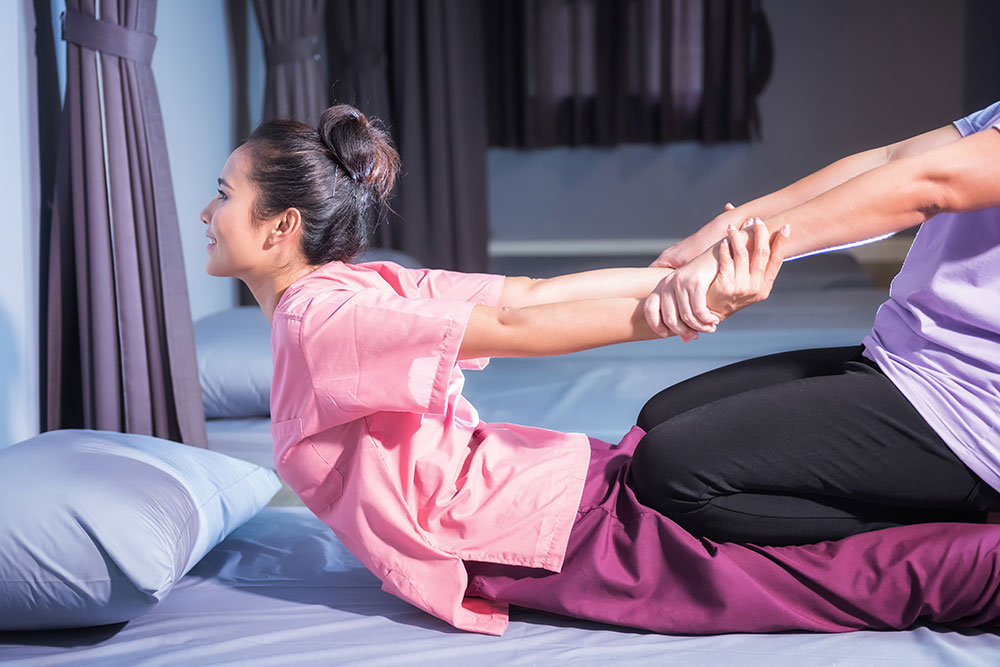
Similar to Indian Ayurveda, there are three “jewels” of healing in Nuat Thai: nutrition, meditation, and asana or physical exercise.
Thai massage is a natural extension of the Buddhist teaching of Metta: applied loving-kindness and compassion. In Thailand, it is not unusual to see Thai Massage schools in Buddhist monasteries offering training in this ancient healing form.
Many schools teach that a Thai Yoga Massage practitioner must always be a clear vessel. So they should work on their own physical and psychological imbalances too so they can help others. This is so that negative energies don’t inadvertently transfer from the giver to the receiver.
It also helps the practitioner stay balanced and centered so that they also do not accidentally pick up negative energies from the ones they are giving massage to.
All Thai massage will have these elements in common:
- Stretches
- Traction
- Joint Movement
- Acupressure
A Thai massage practitioner or therapist will use their hands, fingers, elbows, feet, and even full body weight to manipulate your body during a session.
They will use “relaxed” full body weight on you and will encourage deep, slow breathing synchronizes your heartbeats.
Thai Massage works on meridians in the body called sen to replace stagnant wind with the fresh, healthy wind.
The experience of Thai massage integrates both a physical experience with an energetic one, just like yoga asana. Also, the positions that you may be put in during a session may push your flexibility limits, which is why it is sometimes called yoga for lazy people.
Treatments typically last from one to three hours but some sessions can go for as long as 6 hours.
But even with long sessions, a sincere Thai massage practitioner will not get tired because they believe that it is better to give than to receive.
Getting Certified in Thai Massage

Numerous schools around the world offer international certification in Thai Massage. But these need to comply with certain standards.
Generally, you must complete 800 hours of training to be eligible for certification. The Thai massage school must be registered and teach courses created by Thailand’s Public Health Ministry’s Department of Health Service Support (HSS).
If you wish to become certified in Thai Massage, it’s important that you check your school complies with or offers the same level of quality instruction. This will ensure that you will be taught knowledge passed down from a healing lineage of thousands of years.
Many yoga teachers complement their yoga teacher certifications with Thai massage because the therapy is so complementary to a yoga practice.
Yoga Alliance, one of the leading organizations that maintain certification standards for yoga teachers, allows some Thai Massage courses to grant yoga instructors up to 4 Continuing Education Units (CEUs).
A certain number of CEUs are required annually to maintain your registration status with Yoga Alliance.
The Benefits of Thai Massage
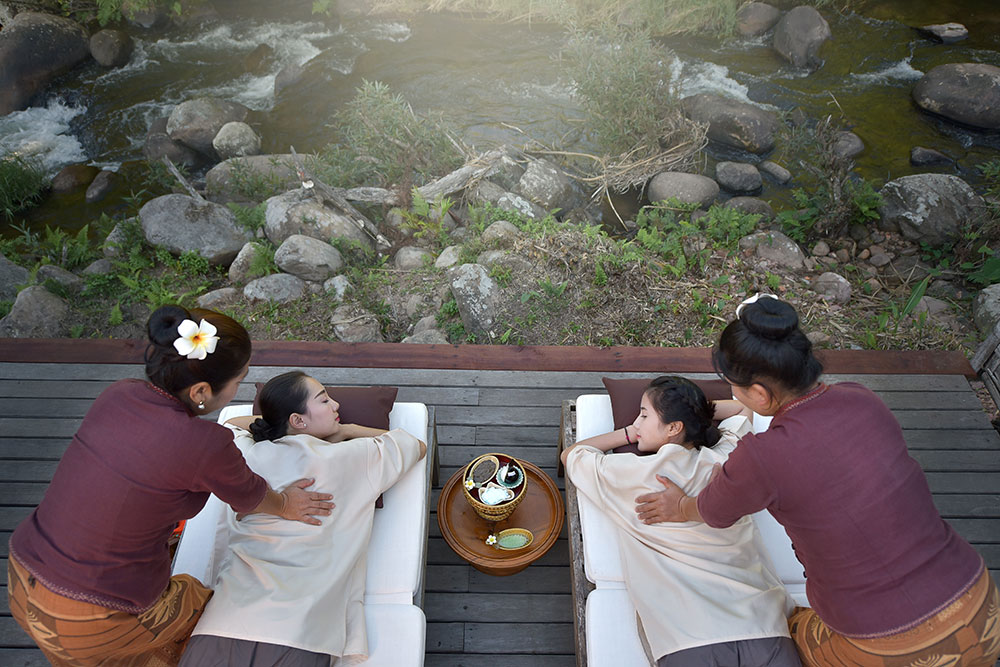
Clinical research shows that Thai Massage can be more effective at relieving stress and boosting energy levels than simple rest.
In randomized trials with healthy individuals, various benefits were observed, including:
- Headache relief
- Improved circulation
- Increased range of motion
- Chronic muscle and joint pain relief
- Improved immunity and detoxification
- Reduces fatigue and improves mental clarity
- Helps sleep problems
- Increased serotonin to enhance mood
Human touch, whether from another person or from yourself as part of a self-care routine, is one of the most important benefits of Thai Massage.
Touch, especially from massage, increases Delta wave activity in the brain. This normally happens with infants or when you are in deep sleep. Delta wave activity in your brain puts your mind into deep relaxation which promotes rest and learning
People who benefitted the most from regular Thai massage treatments were:
- Athletes
- Cancer Care Patients
- Palliative Care Patients
- Chronic Pain Sufferers
- Children on the Autism Spectrum
Although everyone can benefit from regular Thai massage and yoga therapy sessions, there are a few conditions which should exercise caution. Consult with your health care provider before booking an appointment if you have any of the following:
- Pregnant women
- Diabetes patients
- Individuals with high blood pressure
- Neurological diseases which affect the spinal cord
- Heart disease and any disorder that affects blood circulation
- Older people with higher risk of osteoporosis and fragile bones
What to Expect During a Thai Massage
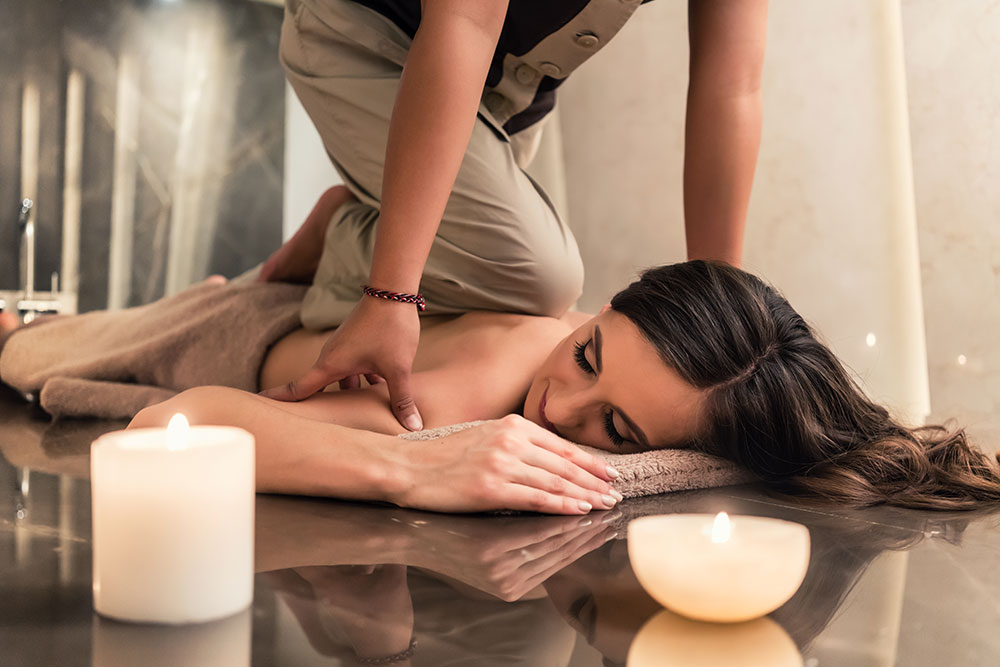
Traditional Thai massage does not use oils or lotions. Both you and the practitioner will be fully clothed. You may be asked to arrive in loose, comfortable clothing, or you may be provided with a set of pajamas like cotton shirts and pants.
Some spas will offer Thai massage on a bed or massage table. But traditionally, you will be asked to lay down on the floor on a clean, firm mat.
In Thailand, it’s not unusual for several people to be in one big, spacious room giving and receiving massages at the same time.
Many places may also start your appointment with a traditional foot wash and massage with herbs and flower water.
In general, when you make an appointment for a massage, follow these guidelines for etiquette:
- Arrive at least 10 minutes before your appointment time to settle in and fill in any necessary forms
- Inform the therapist of any health concerns and physical injuries, surgeries, or pre-existing conditions
- Do not come to your appointment if you have an infectious disease or if you are under the influence of alcohol or drugs
While you are receiving your treatment, stay in a meditative state, and keep your body as relaxed as possible. Your therapist may stretch, twist, and pull you into various positions so keep your muscles and joints loose.
Most traditional Nuat Thai treatments will begin with your extremities and work towards your center. This will correct and balance the prana flowing through your system before returning to work on your extremities again.
Remember that your therapist may use their fingers, elbows, or even their feet to apply pressure on various parts on your body. They may even twist your spine, lift you up slightly to apply rocking motions, and even hold your upside down!
Don’t be shy to talk to your therapist. Some people may not be used to the heavy strokes or acupressure points so communicate your personal preference and comfort level.
Also, inform your therapist if there are areas of your body you would prefer not to be touched for any reason.
At the end of the treatment, it is appropriate to leave a tip for your therapist. Give as much as you feel fair for the service you received. In most western countries, 20% of the bill is a normal amount.
Some Thai Massage Techniques to Practice on Yourself
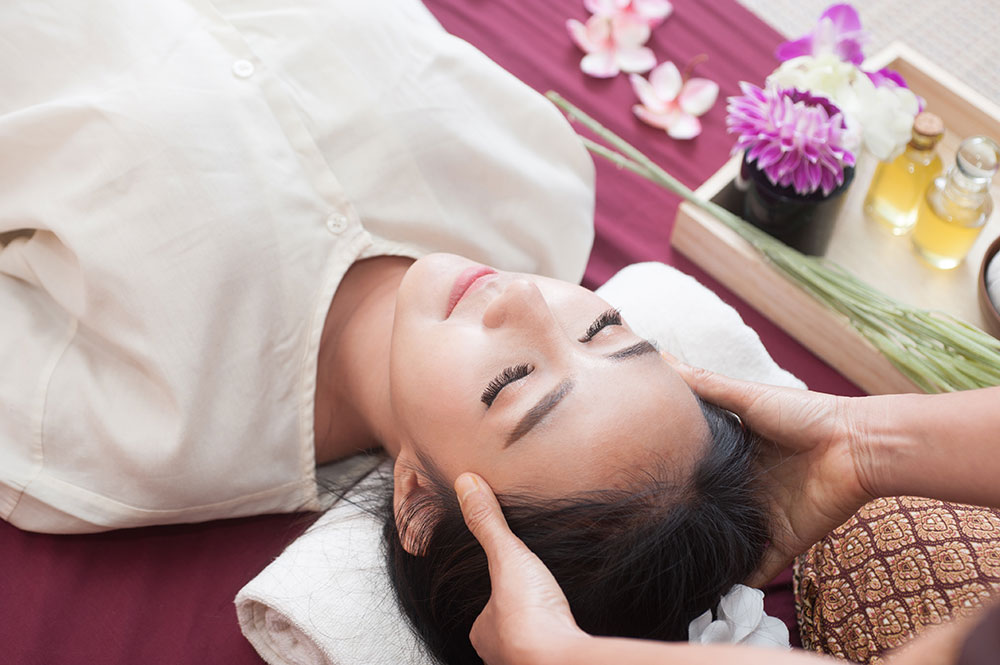
A normal Nuat Thai treatment consists of a giver and receiver. But there are a few techniques that will allow you to work on your own sen lines of energy.
1. Self-Head Massage
Sit comfortably and rub your hand together to warm your palms. Place them on your face gently to begin transferring the energy.
Place your index, middle, and ring fingers on your eyebrows. Press to apply pressure to your comfort. Slide your fingers with the same amount of pressure up your forehead, to the crown of your head, and as far down the back of your head to your nape.
Release and repeat as often as you’d like.
2. Foot Massage
You can combine this technique with some seated asana during your practice to combine the healing effects of Thai Massage and yoga.
In a seated pose like Baddha Konasana (Bound Angle Pose) or Gomukhasana (Cow Face Pose), flex your toes and spread them apart as wide as you can.
Interlace your fingers between your toes to massage between each digit.
You can also apply pressure on your heels or the center of your soles to relieve tired, aching feet.
As with any yoga asana, take the normal, proper precautions and adjustments with pillows, bolsters, or blocks to prop yourself up to stay in a comfortable position as you practice your self-massage.
3. Neck and Shoulder Massage
This neck and shoulder massage may be practiced right before you settle into your body for Savasana, or Final Resting Pose.
As you lay on your back, rub your hands together to warm them. Place your fingers on your forehead with your elbows pointed downwards.
Apply pressure and slide your fingers as your point both elbows outwards.
Slide your fingers across your face, outwards towards your temples. Slide downwards and release.
Look towards your right and place your right fingers on the left side of your neck with your digits pointed downwards. Slide your fingers down your neck and outwards following the curve of your shoulder.
Give yourself a few strokes in this manner and then repeat on the other side.
Conclusion

Traditional Nuat Thai Massage is scientifically proven to effectively relieve stress. It is an ancient technique that is trusted by therapists and health care professionals around the world.
Deeply steeped in Buddhust values, Thai Massage is beneficial for both the giver and receiver. The practice of this healing massage reminds us to live with kindness and compassion.
Whether you practice yoga asana or not, you will appreciate how this “lazy man’s yoga” will improve your flexibility and muscle tone because of the various positions the Thai massage practitioner will place you into.
These positions will re-energize you and allow the flow of prana to re-balance your entire physical and energetic body.
What's Your Reaction?
Susan views the world through a lens of spirituality, health, and compassion. Her positive outlook on life shines through her writing, which is heavily focused on yogic living, meditation, and conscious eating.






